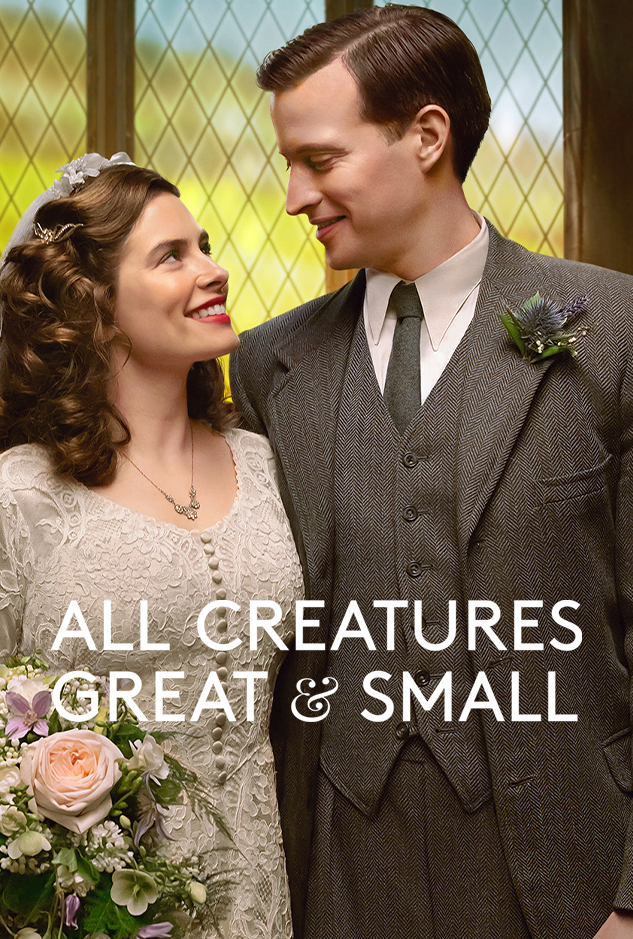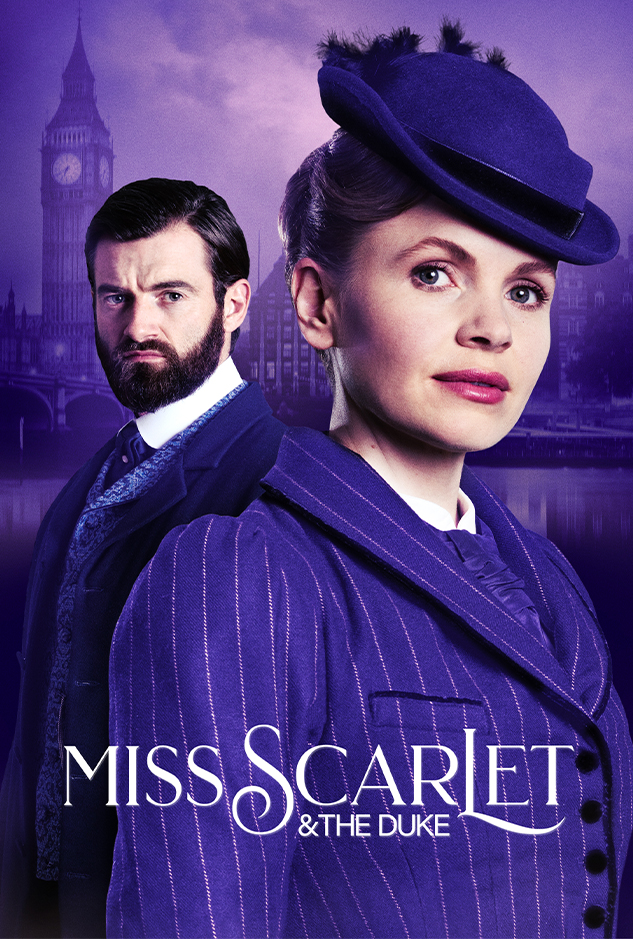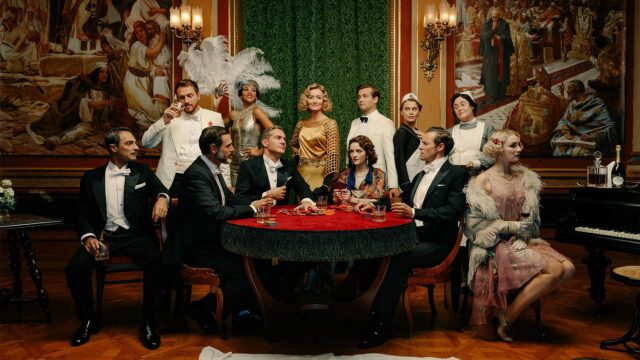Franklin Roosevelt and Crown Princess Martha: A Friendship Forged in War
The TV miniseries Atlantic Crossing presents a surprising and little-known story to American audiences. But how much should we read into the portrayal of FDR and Martha’s relationship? And what was the true nature of their rapport? David B. Woolner, Senior Fellow at the Roosevelt Institute and author of The Last 100 Days: FDR at War and at Peace reflects on a friendship that deepened during wartime.
As war in Europe loomed in the spring of 1939, U.S. President Franklin D. Roosevelt (FDR) launched a strategy he believed would simultaneously strengthen ties with Western democracies, chip away at America’s isolationist attitudes, and begin persuading Congress to ease neutrality laws prohibiting U.S. support for allies at war. FDR used the timely excuse of New York’s 1939 World’s Fair to issue invitations to not only Norway’s Crown Prince Olav and wife Martha, but also to the Crown Prince and Princess of Denmark, and most importantly, to King George VI and Queen Elizabeth of the United Kingdom—the first time the reigning British Monarch ever visited American shores.


FDR’s intent was to show Americans what he called the “essential democracy” of his royal visitors. To this end, he minimized the fuss of official Washington functions and insisted his guests spend time with him at his family home in Hyde Park, New York. (A special feature of each visit involved an informal picnic lunch complete with American hot dogs!)
The timing of the visits was also no accident; they coincided with the Roosevelt Administration’s concerted effort to get Congress to loosen existing neutrality laws and grant FDR the authority to provide other nations with U.S. arms on a “cash and carry basis.” Such action would allow Roosevelt to assist Great Britain and France if war came, without direct American involvement in the fighting. Never one to miss a political opportunity, FDR’s expectation was that the royal visits’ “simplicity and naturalness” would not only showcase U.S. support for European regimes threatened by Hitler, but also garner greater support among the American public for repealing the arms embargo.
It was in the midst of these machinations that Prince Olav and Princess Martha journeyed to Hyde Park for a weekend with the President and Mrs. Roosevelt. It soon became apparent FDR was quite taken with the couple, particularly Martha, whose light-hearted, elegant charm and regal bearing he found especially appealing. The weekend the royals spent in Hyde Park marked the beginning of a warm friendship between the president and the princess that would continue for the next six years.
As depicted in Atlantic Crossing, President Roosevelt directly involved himself in bringing Martha and her children to America for refuge, hosted them for a time at the White House, and helped them find a place of their own nearby. FDR went on to visit the Crown Princess on more than 100 occasions over the course of the war. Not shown in Atlantic Crossing is that many of these visits included Prince Olav and others. Yet, this seeming dedication to Martha has led some observers to wonder if there was some sort of romantic attachment between the two.


That FDR was attracted to Martha and enjoyed her company there can be no doubt. But we should not read too much into their friendship. First, because the president clearly relished being in the company of royals. Diaries of his activities in both Washington and Hyde Park record numerous occasions when Roosevelt played host to the crown heads of Europe. This penchant for royalty not only led to FDR’s close ties with Princess Martha—whom he referred to as his “Godchild”—but the equally close relationship he established with the Dutch royal family. Quite proud of his own Dutch ancestry, the president let Queen Wilhelmina of the Netherlands know he would be very happy to offer Crown Princess Juliana and her children refuge in either Hyde Park or Washington, where he and Eleanor would care for them “as if they were members of our own family.”
Princess Juliana and her children ultimately settled in Ottawa, Canada for the war’s duration—close enough to Hyde Park that they, too, spent a good deal of time with FDR. As was the case with Princess Martha, Roosevelt established a warm bond with the Dutch princess, with whom he adopted the moniker “your old uncle.” FDR also agreed to become Godfather to Juliana’s fourth daughter, Princess Margriet, who was born in Ottawa in January 1943.
Princess Martha’s proximity to the White House made it possible for the president to see her far more often than Juliana and her family, however. Martha also had a personality that was quite compatible with FDR’s. As Roosevelt’s distant cousin, Margaret “Daisy” Suckley recorded in her diary, Martha “is gentle & sympathetic, has a sense of humor & is very responsive. He teases her all the time & she is very teasable & reacts with laughing and blushing.” It was this aspect of Martha’s temperament the president found so appealing; traits that in many respects mirrored his own nature and whose attraction becomes all the more understandable if we place their friendship in a broader context.
It is a well-known fact that since childhood FDR rarely confided his innermost thoughts to his family, friends or advisors. This stoicism became more pronounced when at age 39, FDR contracted infantile paralysis (polio), leaving him unable to walk or stand without others’ assistance. By the time Roosevelt became president, his relationship with Eleanor had also evolved into more of a political partnership than a traditional marriage. For an individual in his condition who also bore the responsibility of high office, emotional impenetrability has its advantages. But it can also lead to a feeling of isolation and worse still, loneliness, even for a person surrounded by a large family and dozens of aides.
It is this private aspect of Roosevelt’s character we must consider if we are to understand the nature of his relationship with Princess Martha. For there were very few people in FDR’s life with whom he could relax and be himself, and even fewer with whom he would share his intimate feelings. Martha fell within the circle of those with whom the president liked to relax—individuals whose relationship with him was not based on a purely political or transactional basis.


Viewed from this perspective, the arrival of Martha and her children at the start of World War II proved something of a blessing for FDR. Their visits with one another—whether at the White House, Hyde Park, or her Pook’s Hill estate in Bethesda, Maryland—provided Roosevelt with a much-needed respite from the war. Nevertheless, we must remember there were other individuals who fell into this category. It was also common practice for FDR to play host to foreign dignitaries with whom he liked nothing better than to escape the confines of office by taking a country drive—his equivalent of going for a walk—or by engaging in chatty conversation over cocktails before dinner, during what the president called “the children’s hour.” Foreign guests were frequently invited to the White House to celebrate Christmas, FDR’s birthday, and Franklin and Eleanor’s wedding anniversary, although it must be said that Crown Princess Martha and her husband Olav attended more of these occasions than any other foreign visitors.
There was also a more serious side to the president’s relationship with Princess Martha. As was the case with Princess Juliana, it is highly likely that FDR provided Martha with news on the war’s progress. As with Juliana, FDR also encouraged Princes Martha to tour Scandinavian regions of the U.S. as a means “to keep the names of the occupied nations constantly before our public.” FDR corresponded with King Haakon VII and was frequently in touch with Olav, either by letter, or in person during the Crown Prince’s many visits to America during the war—some of which lasted three to four months.
Throughout these contacts, issues of special concern to Norway were often brought to the president’s attention. But given that Norway was a relatively small part of a much larger alliance, it was not always possible for Roosevelt to act on them or provide the ships and/or war materiel requested. Atlantic Crossing attributes FDR’s reluctance and/or inability to sell arms to Norway to America’s neutrality laws. But by the time Princess Martha had arrived in the U.S., Congress had already given the president authority to sell arms to waring nations on a cash and carry basis. The real reason Roosevelt was hesitant to offer Norway greater materiel support stemmed from the simple fact that building up U.S. Armed Forces and keeping Great Britain in the war took priority. And while passage of 1941’s Lend-Lease Act significantly expanded FDR’s ability to offer aid to nations like Norway, America’s support for Britain, China and especially Russia took precedence.


As the war intensified, the U.S. would eventually arm Norwegian merchant ships, train their gun crews, repair their vessels and take other measures to assist. But in spite of FDR’s close relationship with Martha and the Norwegian royal family, American support for Norway’s war effort remained relatively small. Still, there is no question FDR harbored a great deal of affection not only for Martha, Olav, and their children, but also for the Norwegian people. Perhaps the best example of this empathy is in the 1942 speech FDR delivered when conferring a 173-foot navy patrol vessel to Norway (via Lend-Lease); a gift marking King Haakon’s seventieth birthday.
Speaking with great determination, FDR said,
If there is anyone who still wonders why this war is being fought, let him look to Norway. If there is anyone who has any delusions that this war could have been averted, let him look to Norway. And if there is anyone who doubts the democratic will to win, again I say, let him look to Norway.
FDR then presented the ship—named for King Haakon VII— to Crown Princess Martha, as “a token of the admiration and friendship of the American people.” He then closed with the hope that the day would soon come “when she will carry the Norwegian flag into a home port in a free Norway!”
Sadly, President Roosevelt would not live to see that day. He died in Warm Springs, Georgia, of a massive cerebral hemorrhage on April 12, 1945—less than three weeks after his departure from Washington for a well-deserved rest. Before leaving, FDR would enjoy one last dinner at the White House, joined by his wife Eleanor, and Crown Princess Martha and her husband.
























